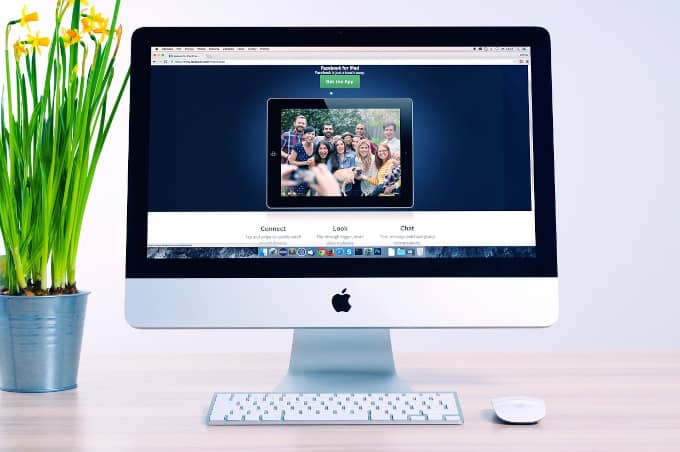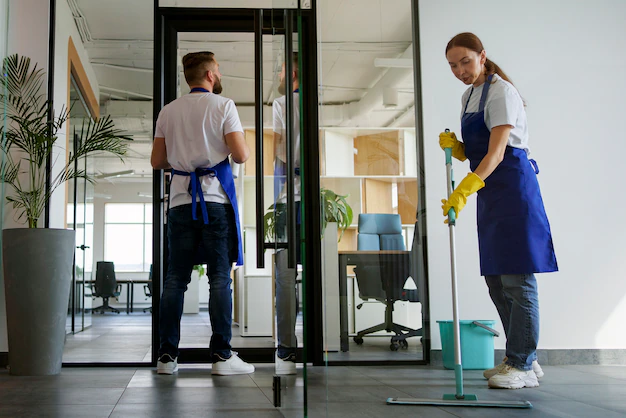Here are standard work tips for you to become more productive at work while keeping yourself grounded at home. Read on to find out how.
Table of Contents
Introduction
Working from home has become increasingly popular in recent years, and especially so in the wake of the COVID-19 pandemic. While there are many benefits to remote work, such as increased flexibility and reduced commute time, it also comes with its own set of challenges.
One of the biggest challenges is finding a way to balance productivity with wellness. Without the structure of a traditional office environment, it can be difficult to stay focused and motivated while also taking care of yourself.
In this article, I’ll provide 8 standard work tips for employees working at home, including the following:
- establishing a dedicated workspace,
- setting a schedule and sticking to it,
- minimizing distractions,
- communicating effectively with colleagues and supervisors,
- taking breaks and maintaining work-life balance,
- prioritizing self-care and mental health,
- utilizing technology and productivity tools,
- managing time and meeting deadlines, and more.
By following these standard work tips, you can increase your productivity and success as a remote worker.
8 Standard Work Tips for Employees Working at Home
1. Establish a Dedicated Workspace
When working from home, it’s important to have a dedicated workspace that is separate from your personal living space. This can help you mentally switch into work mode and increase productivity.
Choose a quiet area in your home where you can set up a desk and comfortable chair. Make sure the lighting is adequate and the temperature is comfortable for you. If possible, try to position your workspace near a window with natural light to boost your mood and energy levels.
Keep your workspace organized and free of clutter to minimize distractions and create a professional environment. By establishing a dedicated workspace, you can improve your focus and concentration while working remotely.
2. Set a Schedule and Stick to It
One of the biggest challenges of working from home is maintaining a consistent schedule. Without the structure of a traditional office environment, it can be easy to fall into the trap of procrastination or overworking. To combat this, it’s important to establish a clear schedule and stick to it as closely as possible.
Start by setting regular work hours that align with your company’s expectations and your personal preferences. This will help you maintain a sense of routine and ensure that you’re available when needed. Be sure to communicate your schedule with colleagues and supervisors so they know when they can reach you.
It’s also important to set boundaries around your work time. Avoid checking emails or taking calls outside of your designated work hours, and resist the temptation to work late into the night. By creating a clear separation between work and personal time, you’ll be able to maintain a healthier work-life balance and avoid burnout.
Of course, life happens, and there may be times when you need to adjust your schedule. When this happens, be sure to communicate with your team and make any necessary arrangements to ensure that your work doesn’t suffer. With a little planning and flexibility, you can successfully balance productivity and wellness as a remote employee.
3. Minimize Distractions and Stay Focused
Working from home can be challenging, especially when it comes to minimizing distractions and staying focused. With no colleagues or supervisors around to keep you accountable, it’s easy to get sidetracked by household chores, social media, or other non-work-related activities.
To stay productive and focused, try implementing some of these tips:
1) Create a distraction-free workspace.
Find a quiet area in your home where you can set up a desk and chair, and make sure that the space is free from clutter and other distractions. If possible, close the door or use noise-cancelling headphones to block out any external noise.

Finding a quiet place to do work make you more productive (Image by 0fjd125gk87 from Pixabay).
2) Establish boundaries with family members or roommates.
Let them know that you are working and ask them to respect your space and time. This may mean setting specific work hours or using a “do not disturb” sign on your door.
3) Limit your access to social media.
Another helpful tip is to limit your access to social media and other non-work-related websites. Consider using a website blocker or app that can help you stay focused and avoid temptation.
4) Take regular breaks throughout the day.
Finally, take regular breaks throughout the day. This may seem counterintuitive, but taking short breaks can actually increase productivity and help you stay focused. Try taking a quick walk outside, doing some stretches, or simply stepping away from your computer for a few minutes.
If you don’t have time for a break, you definitely need a break!
stretchandbloom.com
By implementing these tips, you can minimize distractions and stay focused while working from home. Remember, it takes discipline and effort to stay productive, but with the right mindset and tools, you can succeed as a remote worker.
4. Communicate Effectively with Colleagues and Supervisors
Effective communication is essential for remote employees to succeed in their roles. Without face-to-face interaction, it can be challenging to convey messages and ensure everyone is on the same page.
To communicate effectively with colleagues and supervisors, remote workers should prioritize clear and concise communication. This includes using appropriate channels for different types of communication, such as email for formal messages and instant messaging for quick questions or updates.
It’s also important to establish regular check-ins with colleagues and supervisors to stay up-to-date on projects and ensure everyone is aligned. When communicating, remote workers should always be respectful and professional, keeping in mind that tone can be easily misinterpreted in written communication.
By prioritizing effective communication, remote employees can build strong relationships with their colleagues and supervisors and ensure they are meeting expectations. This is an effective standard work tip that some work at home employees miss out.
5. Take Breaks and Maintain Work-Life Balance
In the midst of a busy workday, it can be easy to forget to take breaks and prioritize your personal life. However, taking breaks as a standard work tip and maintaining a healthy work-life balance is crucial for remote employees to avoid burnout and maintain productivity.
One way to ensure you are taking breaks throughout the day is to schedule them into your calendar or planner. This can help you stay on track with your work tasks while also giving you designated time to step away from your computer and recharge.
During your breaks, consider engaging in activities that promote relaxation and stress relief. This could include going for a walk outside, practicing yoga or meditation, or simply taking a few minutes to read a book or listen to music.
It’s also important to set boundaries between your work and personal life. When working from home, it can be tempting to blur the lines between the two, but this can lead to increased stress and decreased productivity. Establishing a routine that includes designated work hours and personal time can help you maintain a healthy balance.
Remember, taking breaks and prioritizing your personal life is not only beneficial for your well-being, but it can also improve your overall productivity and success as a remote employee. Don’t forget to love yourself.
6. Prioritize Self-Care and Mental Health
Related to the previous tip, working from home can be a great opportunity to prioritize self-care and mental health. It can be easy to fall into the trap of working longer hours or neglecting personal needs. Remember that taking care of yourself is crucial for maintaining productivity and overall well-being.
One way to prioritize self-care is by establishing boundaries between work and personal time. This can include setting specific work hours and sticking to them, as well as avoiding checking work emails or messages outside of those hours.
Additionally, taking breaks throughout the day can help prevent burnout and increase focus when returning to work tasks. Use a pomodoro app to manage your time and achieve tasks in increments that will propel you to accomplish more.
Mental health should also be a priority for remote workers. This can involve practicing mindfulness techniques, such as meditation or deep breathing exercises, to reduce stress and anxiety.
Finally, don’t hesitate to seek support from a mental health professional if needed. Many companies offer employee assistance programs that provide access to counseling services.
Taking care of your mental health is just as important as taking care of your physical health, and it can have a significant impact on your overall success as a remote worker. Study and integrate the mindfulness techniques in your daily life.
7. Utilize Technology and Productivity Tools
In today’s digital age, technology has become an essential part of our daily lives. As a remote worker, it is crucial to utilize technology and productivity tools as a standard work tip to enhance your work efficiency and streamline your workflow.
Here are some tips on how to make the most out of technology:
Firstly, use collaboration tools such as Slack or Microsoft Teams to communicate with your colleagues and supervisors. These platforms allow for real-time messaging, file sharing, and video conferencing, making it easier to stay connected and collaborate on projects.
Secondly, invest in a reliable project management tool like Trello or Asana to keep track of your tasks and deadlines. These tools help you prioritize your work, set reminders, and monitor progress, ensuring that you meet your deadlines and deliver quality work.
Thirdly, take advantage of time-tracking apps like RescueTime or Toggl to monitor your productivity and identify areas where you can improve. These apps provide detailed reports on how you spend your time, allowing you to optimize your work schedule and eliminate distractions.
Lastly, consider using automation tools like Zapier or IFTTT to automate repetitive tasks and save time. These tools integrate with other apps and services, allowing you to create custom workflows that simplify your work processes and increase your productivity.
By utilizing these technology and productivity tools, you can enhance your work efficiency, reduce stress, and achieve a better work-life balance as a remote employee. You will feel better having accomplished more than you usually do.
Be cautioned, however, that you schedule work tasks in moderation or as your energy will allow. Don’t overdo it.
8. Manage Time and Meet Deadlines
One of the biggest challenges of working from home is managing your time effectively. Without the structure of a traditional office environment, it can be easy to get distracted or lose track of time.
To stay on top of your workload and meet deadlines, it’s important to establish a routine and stick to it. Start by creating a schedule that outlines your daily tasks and priorities.
Use a planner or digital calendar to keep track of deadlines and meetings. Break larger projects into smaller, more manageable tasks and set realistic deadlines for each one. This will help you stay focused and avoid feeling overwhelmed.
It’s also important to minimize distractions during work hours. Turn off notifications on your phone and avoid checking social media or personal email during designated work times. If possible, close the door to your workspace or use noise-cancelling headphones to block out background noise.
If you find yourself struggling to manage your time effectively, consider using productivity tools like time-tracking apps as previously mentioned or project management software. These tools can help you stay organized and on-task throughout the day.
Remember, meeting deadlines as a standard work tip is crucial to your success as a remote worker. By managing your time effectively and staying focused, you can ensure that you’re delivering high-quality work on time, every time.
Conclusion
Working remotely can be a great opportunity for many people, but it requires discipline and focus to be successful. By establishing standard work tips such as providing a dedicated workspace, setting a schedule, minimizing distractions, communicating effectively, taking breaks, prioritizing self-care, utilizing technology, managing time, and meeting deadlines, you can balance productivity and wellness from home.
Remember to stay motivated, stay connected with your colleagues and supervisors, and take care of yourself both physically and mentally. With these tips in mind, you can thrive as a remote employee and achieve success in your career.





